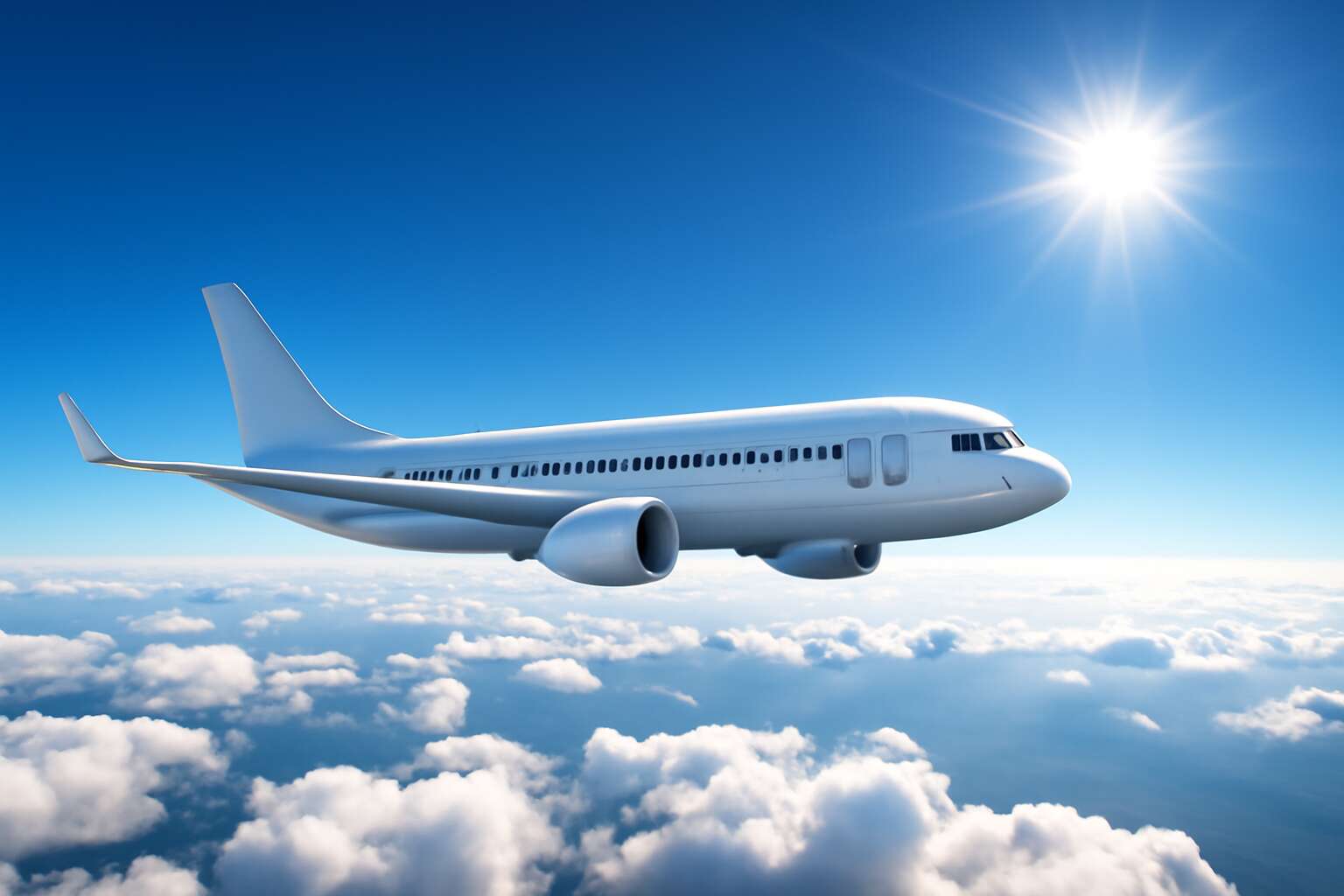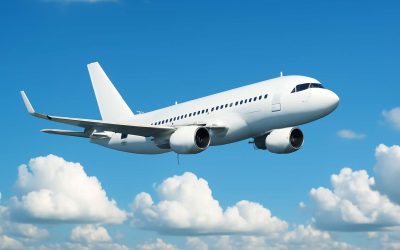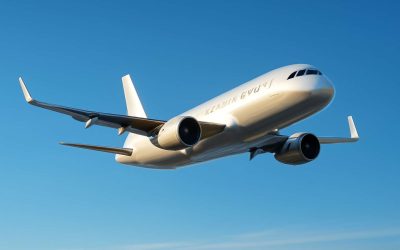Understanding the Basics of Flight at High Altitudes
The Physics of Flight – Explaining lift, thrust, drag, and gravity in relation to altitude
At first glance, the idea of flying thousands of meters above the Earth’s surface might seem like sheer madness, yet it’s a marvel of engineering and physics combined. Why aeroplanes fly at high altitude is rooted in a delicate balance of forces working in harmony to keep the aircraft aloft. Understanding the physics of flight reveals how lift, thrust, drag, and gravity interact differently at these towering heights, transforming an ordinary aircraft into a marvel of human ingenuity.
Lift—the force that keeps the aircraft soaring—depends heavily on the air density, which diminishes significantly at higher altitudes. As the aircraft climbs, the thinner air offers less resistance to the wings, allowing for more efficient lift generation with less energy expenditure. Thrust, generated by powerful engines, must overcome drag—the air resistance opposing forward motion. Interestingly, at high altitude, both drag and gravity are reduced, enabling the plane to cruise faster and more efficiently than at lower levels.
To truly grasp why aeroplanes fly at such lofty heights, consider these key factors:
- Reduced air resistance at higher altitudes allows for increased fuel efficiency.
- Lower temperatures at altitude help preserve aircraft components and fuel stability.
- Optimal cruising speeds are achieved because the balance of forces favors sustained flight with less energy loss.
Ultimately, flying at high altitude is a testament to how understanding the nuanced physics of flight can revolutionize travel, making it faster, safer, and more economical—all while soaring through the skies with remarkable precision.
How Air Density Affects Flight – The role of air density in airplane performance
Understanding the basics of flight at high altitudes reveals a world where physics and engineering dance in perfect harmony. One of the most intriguing factors is air density—an element often overlooked yet fundamental to why aeroplanes fly at high altitude. As an aircraft ascends, the air becomes noticeably thinner, impacting how the wings generate lift and how engines perform.
Lower air density at cruising heights means less resistance, allowing aircraft to maintain higher speeds with reduced fuel consumption. This efficiency is crucial for long-haul flights, turning the journey into a marvel of modern technology and human ambition. The thinner atmosphere also helps in stabilizing temperatures and preserving aircraft components, which thrive in the cooler, less turbulent environment of high altitude.
- Reduced air resistance
- Improved fuel efficiency
- Enhanced engine performance
All these elements coalesce to make high-altitude flight not just a feat of engineering but a testament to our understanding of nature’s subtle forces. This is precisely why aeroplanes fly at such lofty heights—an elegant pursuit of efficiency, safety, and the pursuit of the skies’ silent, boundless poetry.
Aircraft Design and High-Altitude Capability – Design features that enable high-altitude cruising
Understanding the intricacies of aircraft design reveals why aeroplanes fly at high altitude—it’s a marvel of engineering innovation. Modern aircraft are meticulously crafted to operate efficiently in the rarified layers of the atmosphere, where the air is thin and the environment challenging. Key design features, such as high-aspect-ratio wings and advanced aerodynamics, enable these flying machines to sustain lift even at soaring heights.
High-altitude capability isn’t accidental; it’s a carefully engineered feat. For instance, jet engines are optimized for performance in low-density air, allowing aircraft to achieve higher speeds with less fuel. This is supported by features like pressurized cabins and reinforced fuselage structures that withstand the stresses of cruising at such elevated levels. The combination of these elements inspires a seamless flow between physics and engineering, illustrating precisely why aeroplanes fly at high altitude—maximizing efficiency and safety in a delicate, high-stakes environment.
Advantages of Flying at High Altitudes
Fuel Efficiency and Cost Savings – Why high altitude flying reduces fuel consumption
Flying at high altitude isn’t just about reaching your destination faster; it’s a strategic choice rooted in efficiency. Why aeroplanes fly at high altitude ties directly to fuel consumption. At cruising levels, engines operate more efficiently because the thinner air creates less drag—resistance that slows the aircraft down. This reduction in drag means the engines don’t have to work as hard, leading to significant fuel savings over long distances.
Furthermore, flying at high altitude allows aircraft to take advantage of favorable wind patterns, like the jet stream, which can push planes along faster and with less fuel. This combination of reduced drag and optimal wind use makes high-altitude flying a cost-effective approach for airlines. It’s no exaggeration to say that this strategy helps keep ticket prices competitive for consumers and airlines profitable.
In essence, understanding why aeroplanes fly at high altitude reveals a careful balance between engineering, economics, and environmental responsibility—where every mile flown at altitude matters.
Reduced Air Resistance – The impact of lower air resistance on aircraft speed and efficiency
There’s a quiet magic behind the soaring elegance of commercial aircraft—why aeroplanes fly at high altitude isn’t just a matter of speed, but a symphony of engineering and efficiency. When an aircraft ascends to those towering cruising levels, it enters a realm where the air becomes whisper-thin, transforming how the plane interacts with its environment.
Reduced air resistance is the key player here. Thinner air means less drag, allowing the aircraft to glide smoothly and swiftly through the sky. This lower resistance isn’t just about speed; it directly impacts fuel efficiency, making each mile flown at high altitude a marvel of economical travel. Passengers might feel the gentle hum of engines working less hard, unaware that their journey is powered by the science of high-altitude flight.
For airlines, this advantage translates into significant cost savings, a crucial factor in keeping air travel affordable. By capitalising on lower air density, planes can cruise faster and further—transforming long-haul flights into feats of engineering artistry. The question of why aeroplanes fly at high altitude reveals a world where physics, design, and economics converge in a delicate ballet of flight.
Avoiding Weather and Turbulence – Benefits of altitude for smoother flights and safety
High above the clouds, where the sky seems endless, lies a realm of strategic advantage for aircraft. The why aeroplanes fly at high altitude isn’t just a matter of tradition or design—it’s a carefully calculated response to the unpredictable and often tumultuous atmospheric environment. Flying at these heights offers a unique shield against the chaos of weather, transforming what could be an unpredictable ordeal into a serene voyage.
At cruising altitude, aircraft are often well above storm systems and turbulent air currents. This elevation acts as a natural barrier, helping pilots avoid the worst of weather phenomena such as thunderstorms, heavy winds, and turbulence. The benefits of altitude for smoother flights are not simply comfort-driven but are vital for safety and operational stability. When an aircraft navigates through calm, stable air, passengers experience a quieter, more comfortable journey, while airlines benefit from fewer delays and disruptions.
Furthermore, flying at high altitudes means that planes can maintain a steady course, avoiding the unpredictable variability of lower atmospheric layers. The calmness of the upper atmosphere reduces the likelihood of turbulence, making high-altitude flight an elegant dance of physics and safety. It’s a delicate balance—where the benefits of avoiding weather hazards are as crucial as the efficiencies gained from operating in a more stable environment.
Regulations and Limitations of High-Altitude Flying
Air Traffic Control and Flight Levels – Managing multiple flights at high altitudes
In the shadowed corridors of the sky, where silence reigns and the celestial dance unfolds, the question of why aeroplanes fly at high altitude is both a mystery and a necessity. It’s a realm where the limits of human engineering meet the haunting beauty of efficiency, whispering secrets about the very nature of flight itself. The skies above South Africa are dotted with these giants, cloaked in the dark elegance of their altitude, whispering tales of strategic mastery.
Regulations govern these high-altitude journeys like an unseen hand, orchestrating a delicate ballet across the vast azure. Air Traffic Control (ATC) meticulously manages multiple flights at these soaring heights, where flight levels—each a specific altitude—are assigned to prevent chaos in the abyss. This system ensures that the silence remains unbroken by collisions, while allowing the aircraft to glide smoothly through the ghostly expanse.
- Clearance and coordination between pilots and controllers are paramount, maintaining a balance between safety and efficiency in this high-stakes theatre.
- Flight levels are assigned based on a strict set of regulations, ensuring that each aircraft’s path is a thread woven into the grand tapestry of the sky.
Though these rules may seem constrictive, they unlock the true potential of high-altitude flying—reducing turbulence, conserving fuel, and enabling those dark, poetic journeys across continents. In this realm where the air thins and the world below becomes a distant memory, the mastery of managing multiple flights at high altitudes is a testament to human ingenuity and the relentless pursuit of the sublime in flight.
Physiological Considerations for Pilots and Passengers – Altitude-related safety measures
The skies may appear tranquil and unchanging, but beneath that calm surface lies a complex web of regulations and physiological considerations that make high-altitude flight not just possible, but optimal. One might wonder, why aeroplanes fly at high altitude? The answer is as much about human safety as it is about engineering prowess. For pilots and passengers alike, understanding the limitations imposed by altitude is essential for a safe and comfortable journey.
Regulations governing high-altitude flying are stringent, designed to ensure that each aircraft adheres to safety margins that account for the thin, cold air. These rules restrict the maximum altitude an aircraft can reach without risking oxygen deprivation or other physiological issues. Pilots must operate within these boundaries, relying on sophisticated oxygen systems and pressurization to combat the physiological challenges of high-altitude travel. The importance of these safety measures cannot be overstated, especially when considering the delicate balance required to keep everyone onboard secure.
For passengers, the experience of flying at high altitude involves more than just a scenic view—it’s about managing the body’s response to a reduced oxygen environment. Airlines equip cabins with pressurized environments, ensuring that oxygen levels remain comfortable and safe.
- Oxygen masks deploy automatically in case of depressurization
- Cabin pressurization systems maintain an equivalent altitude of around 6,000 to 8,000 feet
The mastery of these safety measures is a testament to the intricate dance between technology and physiological necessity, allowing us to soar across continents with minimal discomfort or risk.
Aircraft Certification and Limitations – Regulatory standards for high-altitude operation
Ever wondered why aeroplanes fly at high altitude? It’s not just for the breathtaking views or the thrill of soaring above the clouds. The primary reason ties directly into safety and efficiency, with regulatory standards playing a crucial role. Aviation authorities worldwide impose strict limitations on high-altitude operations to ensure that aircraft can operate safely within physiological and engineering boundaries.
Aircraft certification for high-altitude flight involves a rigorous process. These standards guarantee that airplanes are equipped with advanced pressurization systems, oxygen supplies, and structural integrity to withstand the stresses of cruising at altitude. Regulatory bodies like the Civil Aviation Authority (CAA) enforce these safety measures, setting maximum flight levels to prevent physiological risks such as hypoxia (oxygen deprivation) and structural fatigue.
To keep everything in check, aircraft must meet specific design and performance criteria before they’re cleared for high-altitude operation. For instance, they need reliable pressurization systems that maintain cabin altitude around 6,000 to 8,000 feet, even when cruising at over 35,000 feet. The regulations also restrict maximum altitude to ensure pilots and passengers remain within safe physiological limits, avoiding any undue risk.
- Compliance with international standards such as ICAO Annex 6
- Certification of oxygen systems and cabin pressurization
- Adherence to maximum flight level restrictions for safety and efficiency
In essence, the laws of the skies are designed to balance the incredible benefits of high-altitude flying with the equally important need for safety. After all, no one wants to experience an unplanned descent due to regulatory oversight or engineering failure—especially when flying at 40,000 feet!
Technical Aspects of Maintaining High-Altitude Flight
Engine Performance at High Altitudes – How jet engines operate efficiently at cruising altitude
Ever wonder why aeroplanes fly at high altitude? It’s not just for a scenic view from the cockpit — there’s serious engineering behind it! Jet engines are marvels of modern technology, designed to operate efficiently in the thin, chilly air up there. At cruising altitude, the engine’s turbines work in a more aerodynamic environment, where the reduced air density allows for optimal combustion and thrust generation. This is vital because, as we all know, engines love a good breeze, but hate being bogged down by thick, heavy air.
To keep performance in top gear, jet engines utilize a series of components that continuously adapt to the altitude. For example, high-altitude engines feature sophisticated variable vane systems and advanced combustors that maintain high efficiency despite the shriveling air molecules. This isn’t just about speed — it’s about economy. The lower air resistance at high altitude means less fuel is needed to keep the plane gliding smoothly across the sky. And isn’t that the dream of every airline? Flying higher, faster, and with less fuel — all while making the flight feel like a breeze for passengers.
Here’s a quick peek into how jet engines manage to perform so well at high altitude:
- Optimized compressor blades that handle thin air efficiently
- Specialized fuel injection systems for cleaner, more complete combustion
- Advanced materials that withstand extreme temperature changes
All these innovations explain why aeroplanes fly at high altitude — it’s not just about getting there faster, but doing so with the kind of efficiency that keeps airline costs in check and passengers comfortably cruising above the clouds.
Pressurization Systems – Ensuring passenger comfort and safety in thin air
When it comes to the intricacies of high-altitude flight, few aspects are as critical yet often overlooked as the pressurization systems that safeguard passenger comfort and safety. Flying at high altitude exposes aircraft interiors to the thin, frigid air outside—conditions that would be impossible for humans to endure without sophisticated pressurization. These systems meticulously regulate cabin pressure, ensuring that travelers experience a comfortable environment despite the extreme conditions outside.
Maintaining optimal cabin pressure involves a complex interplay of technology and precision engineering. Modern aircraft employ advanced pressurization systems that monitor and adjust airflow, keeping the altitude equivalent within the cabin around 6,000 to 8,000 feet—much lower than the plane’s actual cruising altitude. This difference is vital because it prevents hypoxia and other altitude-related health issues for passengers and crew alike.
Key components of these systems include:
- High-capacity outflow valves that control the escape of pressurized air
- Robust sensors that continuously assess cabin altitude and pressure levels
- Automatic control units that respond instantly to changing flight conditions
The seamless functioning of these elements is crucial in ensuring that high-altitude flying remains a marvel of safety and comfort. Why aeroplanes fly at high altitude isn’t solely about speed; it’s also about integrating complex pressurization systems that shield everyone onboard from the unforgiving environment of the upper atmosphere. Without these innovations, the entire concept of high-altitude flight would be impossible to sustain.
Navigation and Communication – Technologies that support high-altitude navigation
Ever wondered why aeroplanes fly at high altitude? The answer lies in a fascinating mix of cutting-edge technology and clever engineering that keeps our skies both safe and efficient. To navigate the vast, thin air at cruising altitudes, aircraft rely on sophisticated navigation and communication systems that are nothing short of marvels. These systems ensure pilots stay on course and connected, even when soaring above 35,000 feet, where traditional radio signals can struggle to reach.
Modern high-altitude navigation employs a combination of satellite-based GPS, inertial measurement units, and ground-based radar updates. This technological cocktail provides precise positional awareness, allowing aircraft to maintain optimal flight paths. Meanwhile, high-frequency (HF) radio and satellite communication links keep pilots in touch with air traffic control, even over remote regions where radio contact would otherwise be impossible. These innovations are vital to why aeroplanes fly at high altitude—they transform what could be a lonely, disconnected voyage into a seamless journey.
In essence, the seamless integration of these advanced technologies not only supports safe navigation but also enhances fuel efficiency and reduces delays. The ability to operate at such lofty heights is no accident; it’s a carefully orchestrated synergy of innovation—making high-altitude flight a technological triumph that keeps our world connected, one mile above the ground.
Future Trends in High-Altitude Flight
Advancements in Aircraft Design – Innovations for higher and more efficient cruising
As technology hurtles forward, the skies become a canvas for innovation, where the quest to understand why aeroplanes fly at high altitude fuels a symphony of advancement. The future of high-altitude flight is not merely about reaching greater heights but about weaving efficiency and sustainability into every journey. Cutting-edge aircraft design is embracing lightweight materials and aerodynamically refined shapes, paving the way for aircraft that soar higher while consuming less fuel.
Innovations such as blended wing bodies and adaptive wing designs promise to redefine cruising altitudes, enabling aircraft to operate more efficiently in thinner, less turbulent air. These advancements aim to optimize engine performance at high altitude, ensuring that each flight is smoother, safer, and more economical. As the horizon of aviation expands, the pursuit of higher, faster, and greener flight remains relentless, driven by a visionary desire to push the boundaries of what is possible in the vast, open sky.
Supersonic and Hypersonic Travel – The future of ultra-high-altitude commercial flights
As aviation ventures into uncharted territories, the future of ultra-high-altitude travel promises to redefine our journey through the skies. The allure of supersonic and hypersonic flight isn’t merely about breaking sound barriers; it’s about transcending traditional boundaries of altitude and speed. Why aeroplanes fly at high altitude is rooted in a quest for efficiency, speed, and sustainability, but the horizon now beckons toward a new era of commercial flight—one where aircraft glide at speeds surpassing Mach 2 and beyond.
Advancements in propulsion technology and aerodynamic design are paving the way for these extraordinary journeys. With innovations like scramjets and adaptive wing structures, future aircraft could operate seamlessly in the rarefied air of the stratosphere. These technological marvels promise not only to cut travel times drastically but also to reduce the environmental footprint of long-haul flights. The pursuit of high-altitude supersonic and hypersonic travel is a testament to our relentless desire to explore faster, higher, and more efficiently.
- Enhanced fuel efficiency at ultra-high speeds, which minimizes operational costs.
- Reduced air resistance, allowing for smoother, quieter flights at unprecedented velocities.
- Navigation systems that adapt to the challenges of operating at extreme altitudes, ensuring safety and precision.
These futuristic flights will leverage cutting-edge materials and innovative engineering to push the limits of what’s possible. As we stand on the cusp of this new frontier, the question of why aeroplanes fly at high altitude takes on a new dimension—one driven by the desire to connect continents faster, greener, and with a touch of the extraordinary. It’s a dance of science and imagination, where every mile traveled is a testament to human ingenuity. The skies are no longer the limit—they’re just the beginning.
Environmental Impact – Reducing emissions and improving sustainability in high-altitude flight
As the aviation industry pushes towards greener and more efficient travel, the question of why aeroplanes fly at high altitude takes on renewed significance. High-altitude flight offers a unique window to reduce emissions and improve sustainability in the skies. By operating in the thinner, less dense air of the stratosphere, aircraft can significantly lower their carbon footprint while maintaining optimal performance.
Innovations in engine technology and aircraft design are central to this shift. For instance, newer engines are engineered to operate efficiently at high altitudes, ensuring that fuel consumption is minimized. This not only translates into cost savings but also means fewer greenhouse gases released into the atmosphere. As the industry explores future trends in high-altitude flight, sustainability remains at the core of development efforts.
- Reduced drag due to lower air density
- Less fuel needed for cruising distances
- Lower emissions contributing to climate goals
Overall, the move towards high-altitude flight is more than a technical evolution—it’s a conscious effort to balance human mobility with planetary health. As we continue to innovate, understanding why aeroplanes fly at high altitude becomes crucial in shaping an aviation future that is both efficient and environmentally responsible.




0 Comments